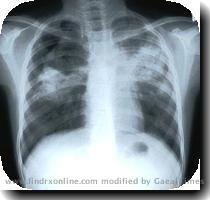Experts examine mummy of 13th-century saint, say she died of a heart defect
By Maria Cheng, APThursday, June 10, 2010
Italian saint likely died of heart defect
LONDON — For thousands of Catholics, the 13th-century Italian Saint Rose of Viterbo had miraculous powers that allowed her to raise someone from the dead and survive the flames of a burning pyre.
Scientists examining the saint’s mummified body now say she had a congenital heart defect that may have ultimately killed her as a teenager.
Ruggero D’Anastasio of the G. d’Annunzio University in Chieti, Italy, and colleagues analyzed pictures and X-rays of the medieval saint’s preserved heart, which looks like a petrified lump of rock.
They suspect Saint Rose died of Cantrell’s syndrome, a rare heart disorder, rather than tuberculosis, as previously thought. The research was published Friday in the British medical journal Lancet.
To get the X-rays, D’Anastasio and his team took a portable machine to Santa Rosa monastery in Viterbo, near Rome, where Saint Rose’s heart is kept in a reliquary. Her body was mummified separately.
D’Anastasio said he and the monastery’s officials were particularly keen to find out what killed the patron saint of people in exile, as she was only about 18 years old when she died. “We found a blockage in her heart that was most probably fatal,” he said, adding there was no evidence of tuberculosis.
Frank Ruehli of the University of Zurich and the Swiss Mummy project called the diagnosis “extraordinary.” He was not linked to the research.
Ruehli hypothesized the heart syndrome might have given Saint Rose an enlarged organ or made its pumping slightly visible beneath the skin. “People might have been aware of her being special in a medical sense,” he said.
Ruehli said it was impossible to know how severe Saint Rose’s heart disorder was, but that it might have strengthened her link to followers if they recognized there was something different about her.
Others said it was an interesting footnote but likely would not change much about our understanding of Saint Rose or the heart defect itself.
Howard Markel, director of the Center for the History of Medicine at the University of Michigan, said re-examining mummies should only be done under certain circumstances.
“To avoid this being a macabre parlor game, we have to ask … does this answer any burning questions in medicine or in history?” he said. “I’m not sure this does.”
He said better technologies would allow scientists to investigate how many historical figures died, but that exhumation wasn’t always justified.
“We are obliged to offer them the same kind of dignity and respect that we would like,” he said. “In 500 years, do you want people digging up your body?”
Online:
www.lancet.com

